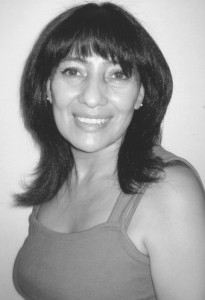The person who, in his neighborhood, is depreciated for being a criminal or a drug addict, or a thief, in Xibalbá is treated and respected as a useful and important person, as an artist.
Honduras is a country broken by the chronic inequality that has excluded young people from the centers of economic and cultural opportunity, forcing them to survive on the margins of society, with the violence and inscrutability of the gangs. With the foundation, in 1989, of Xibalbá, Itsmania Pineda created a space and an opportunity where young people have the chance to change their lives and channel their artistic energies into different socially beneficial projects. With these activities they are able to discover new identities, based on admiration and respect from the community.
During her childhood in Comayagüela, on the periphery of Tegucigalpa, Itsmania Pineda was part of the expansion of the youth organizations that are recognized all over Central America by the name of maras. Those brotherhoods were originated in the United States as a reaction to the violence related to inter-ethnic and economic factors that created conflicts inside the immigrant community. With the deportation of their leaders and members, the gangs were reproduced in their native territories. In 1989, along with a group of artists and community activists, inspired on the Mayan idea of the labyrinth-like essence of the human spirit, Itsmania founded the Xibalbá Art and Culture. Honduran youth, despised and excluded because of their way of dressing and their gang symbols, found, in Xibalbá, a place to develop their creative and cooperative potential, participating, for example, in a series of concerts and art marathons. Since then, they were able to express themselves, showing their sensibilities, and responding in benefit to social needs. The repercussions of those manifestations helped to melt the masks of public prejudice and gave the young people from Xibalbá a prestige that travels far beyond the Honduran national borders. In her book Why I joined the gangs, Itsmaniaofficially named by the Honduran courts as the only expert and adviser in the interpretation of tattoosapproached the dynamics of the youth gangs from a panoramic vision, which she gained due to her privileged experience. The book acted as immediate stimuli for the international mechanisms of solidarity and is considered of inestimable value to the field of social science. If the youth can function together to give a violent response to situations, they can act together in order to respond with their art.
Xibalbá: Arte y Cultura
Latin America and the Carribeans | Honduras

